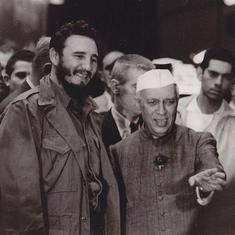Here are three tracks that showcase Kesarbai Kerkar’s explorations of the thumri form. Each of these is in the raag Bhairavi, a perennial favourite with musicians and listeners and one of the prominent raags in which one finds several thumris.
Babul Mora Naihar Chhuto hi Jaayee
On the first track, she sings the famous thumri Babul Mora Naihar Chhuto hi Jaayee composed by Nawab Wajid Ali Shah (1822-1887) of Awadh. Kesarbai Kerkar's pukaar in this live concert recording, enhances the poignance of the narrative. While doing so, she also adroitly shifts tonal centres by emphasising different parts of the original melodic movement. But she employs this device judiciously and only momentarily, only to return to the main melodic framework. She sings this composition in the 16 matra (or time-unit) Jat taal and concludes by doubling the tempo for the laggi section played by the tabla player.
Jaat kahaan ho
Jaat kahaan ho is a hori sung by Kesarbai Kerkar for a 78 rpm recording. This is a hori sung in the thumri format and is set to Deepchandi, a 14 matra taal or time-cycle. The laggi section at the end of the recording lasts only for a few seconds. Interestingly, this was the only Indian recording to be sent into outer space on the Voyager 2 spacecraft launched in 1977, along with several other recordings from various musical cultures.
Thumri in Bhairavi
Kesarbai Kerkar’s voice soars into the upper octave on the third track. This melodic emphasis continues even in the laggi section. The original composition is set to Deepchandi, but changes to Kaherva, an eight matra taal, as is conventionally done in thumri rendition to accommodate the laggi patterns of the tabla.










